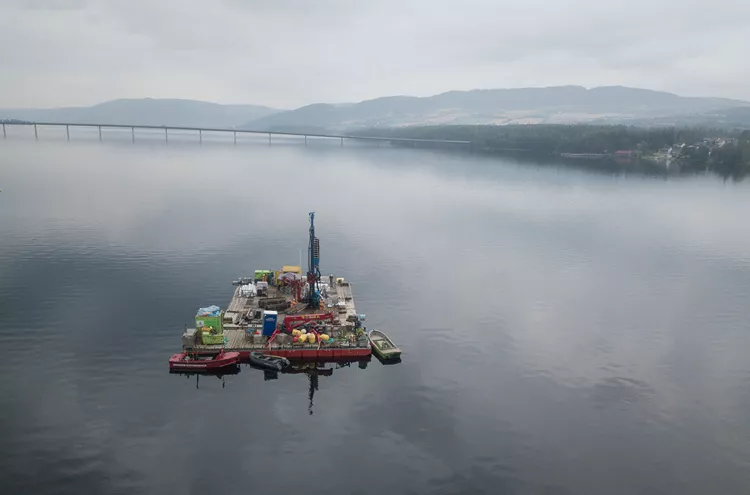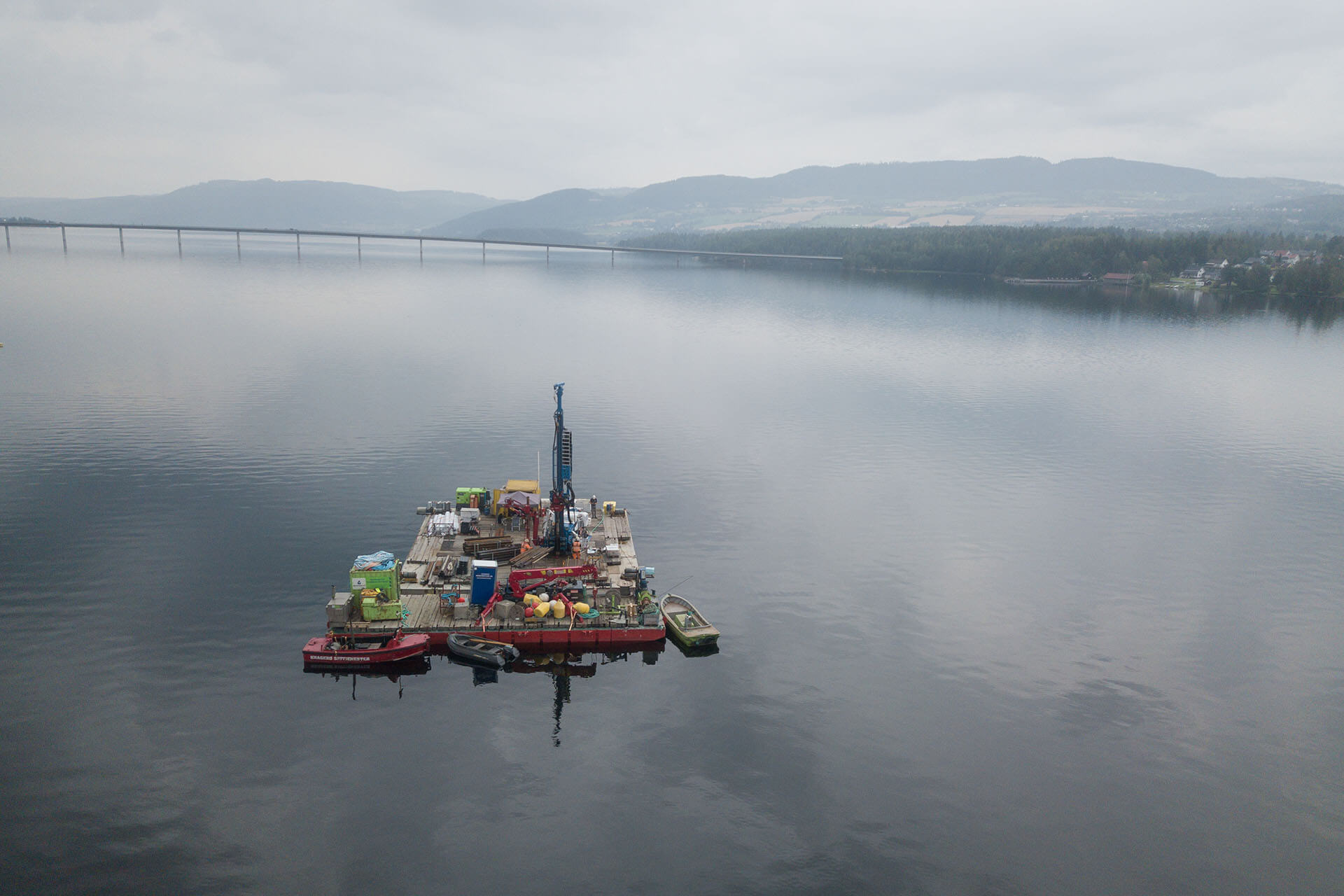

Nearshore and offshore soil surveys are performed by drilling companies that combine geotechnical research with sonic sampling and cone penetration testing. They use the results from this research to create offshore wind farms, or to lay cables and oil or gas pipelines.

Nearshore generally refers to the area under water, up to a depth of 20 meters. In this nearshore zone, drilling companies use jack-up platforms and other static access platforms to set up their drilling equipment above sea level. Working on a platform allows the equipment to access the research site despite large tides and unpredictable marine conditions.
In the case of offshore, drilling is carried out under the seabed to investigate the geotechnical characteristics there. The term is widely used for drilling in the open sea, but the technique can also be applied in lakes, inshore waters and inland seas.
Most Royal Eijkelkamp sonic drills have a quick-change chuck, for drilling through various types of overburden ground such as hard rock granite and sand gravel, which are common on seabeds.
Sonic drilling equipment is suitable for drilling and sampling many different soil types. Cone Penetration Testing investigates (dynamic) soil behaviour, which is an important property for structures built at sea or on the seabed that cause vibrations, such as a wind farm. The stability of the soil can be estimated, which is valuable input for foundation design. Because Royal Eijkelkamp is a supplier of both CPT and sonic drilling machines, our equipment can be combined in the form of the Drill'n CPT technique. This adds the CPT technique to your sonic drilling rig. The advantage is that you can use the same borehole to determine soil behaviour, but you can also drill sonically to break through hard soil layers, for example. You can also take samples of the soil at the same time.
Space is limited on an offshore platform, so space-saving solutions are particularly helpful here. Because our drilling machines are so versatile, you only need one machine for multiple operations - including sonic drilling and sampling, CPT, and SPT - which saves both space and time. The ManipAll rod and casing handler simplifies the operation of the machine. In addition, our machines are equipped with the Monitor While Drilling system, which monitors all kinds of parameters of the machine, such as the number of operating hours and temperature, but also of the drilling process itself, such as pressure force, rotational force and more. This way you always have an overview of what is happening at the research location.
The drilling companies that carry out nearshore and offshore seabed investigations use the results of their investigations to prepare advisory reports for customers who want to build in or at sea. Supplying accurate data, and therefore conducting accurate research, is extremely important. The equipment we supply is specially made for use in these challenging conditions, and a variety of options and tooling are available to make work at sea safer, easier and ergonomically sound. Royal Eijkelkamp continues to innovate to meet the ever-changing customer demand, which is why companies such as Fugro, Aratellus and Lankelma have been relying on our products for years.